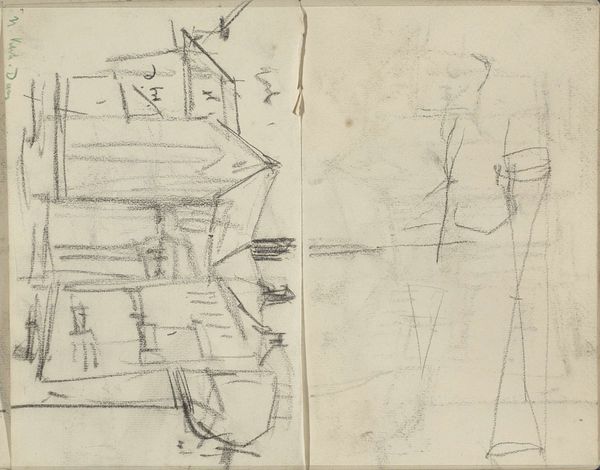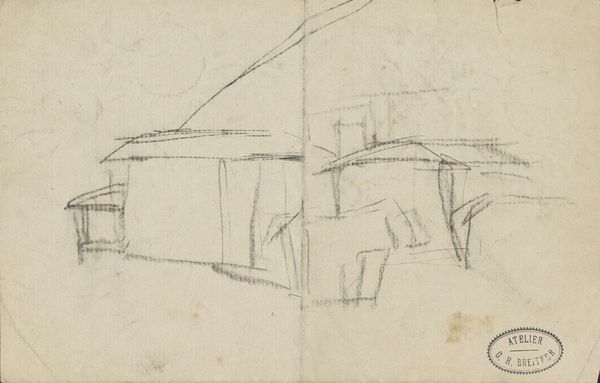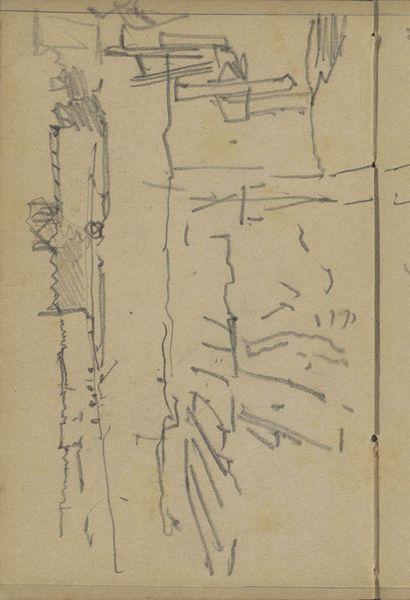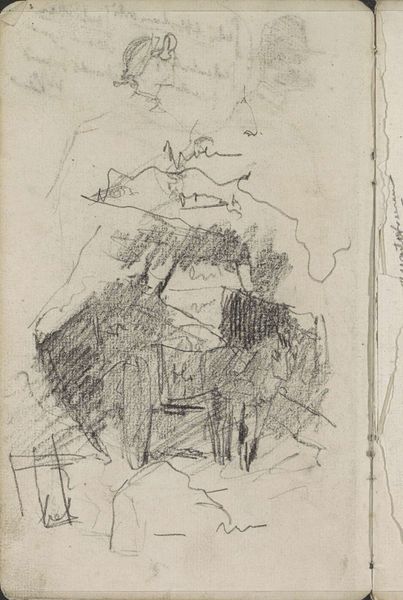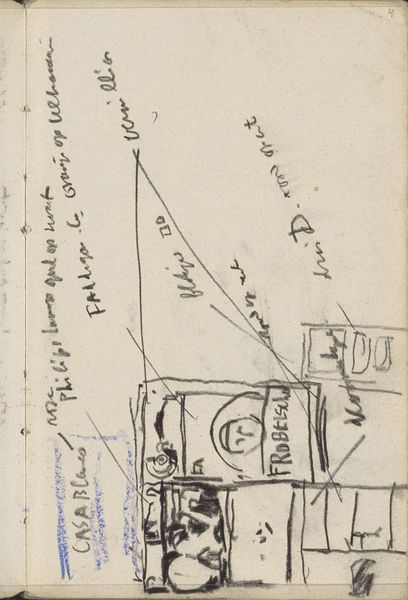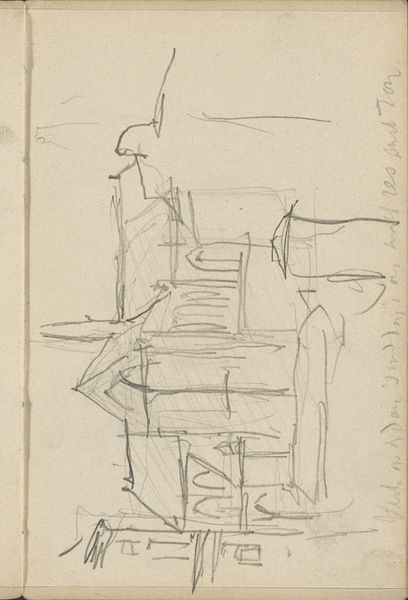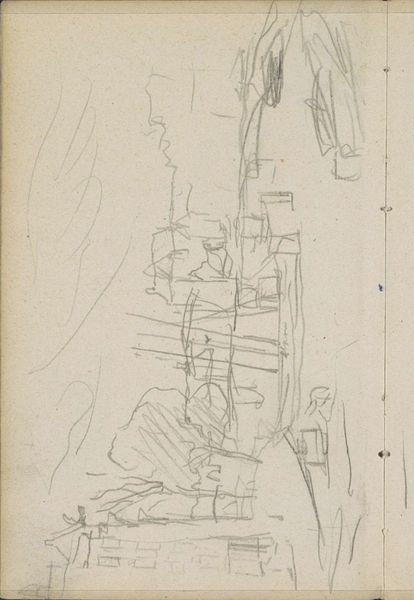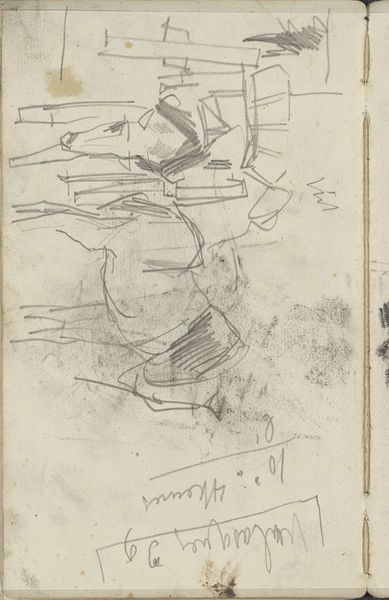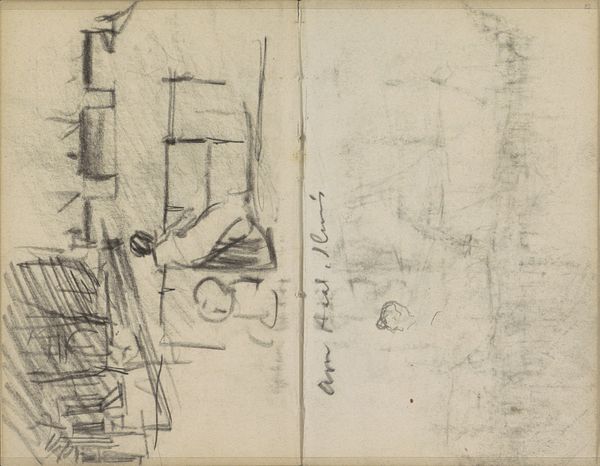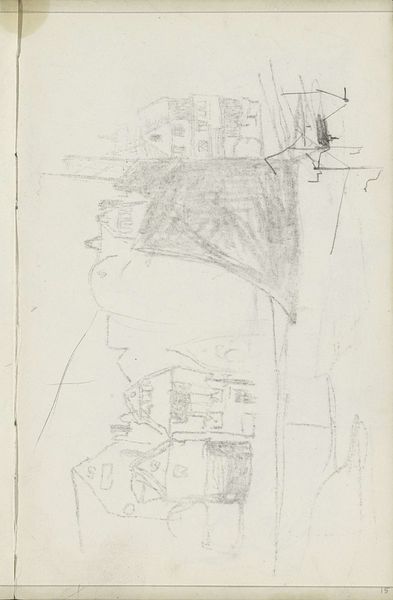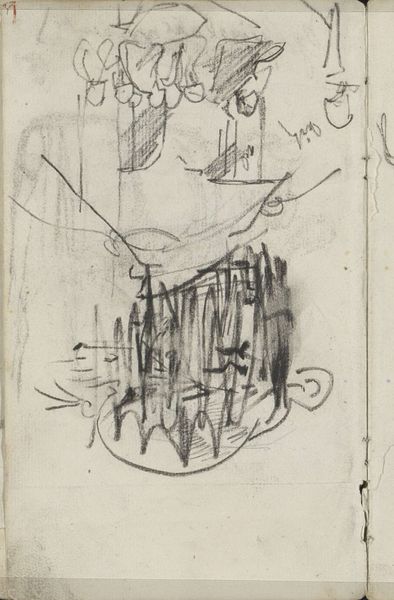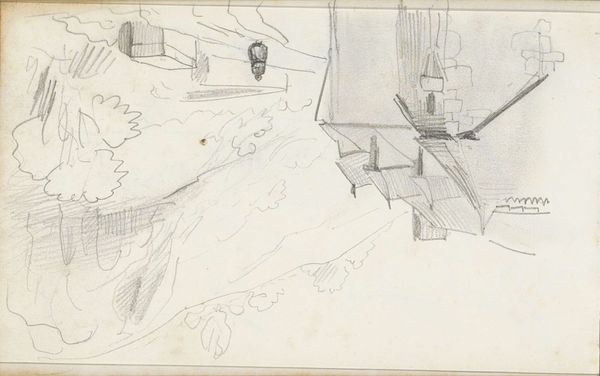
Brug over de Keizersgracht te Amsterdam, ter hoogte van de Reguliersgracht 1897
0:00
0:00
georgehendrikbreitner
Rijksmuseum
Dimensions: height 102 mm, width 110 mm
Copyright: Rijks Museum: Open Domain
Editor: This quick sketch, "Brug over de Keizersgracht te Amsterdam, ter hoogte van de Reguliersgracht," by George Hendrik Breitner, made in 1897 using pencil on paper… it’s so unassuming, almost a casual glimpse. It really gives an unvarnished view. What do you make of it? Curator: It's fascinating how Breitner captures a slice of Amsterdam life. Considering the period, we see the burgeoning urbanization depicted through a seemingly simple bridge scene. Think about what a 'snapshot' like this meant at a time when photography was gaining traction, threatening traditional art forms. What is Breitner asserting here? Editor: You mean, he's making a case for drawing's own way of capturing a scene, alongside photography? Curator: Precisely! And note how this sketch itself became a commodity, bearing the "Atelier G.H. Breitner" stamp. It elevates a fleeting observation into a piece of art for the public to consume, to own a piece of Amsterdam. How does this change your perception of the work? Editor: I guess it makes me think more about the artist’s intention. Was it really just a sketch, or was it always meant for display? Knowing it could be sold makes me wonder if the "snapshot" feel was deliberate, a way to create a market for everyday life. Curator: Indeed. And that tension – between genuine observation and artistic calculation – is what makes Breitner so compelling. It demonstrates how art responds to social changes and emerging markets, subtly shaping how we perceive urban life. Editor: That’s a great point. I never really considered the sketch itself as a social commentary. Curator: Art is rarely made in a vacuum; it's always responding to, and shaping, the world around it.
Comments
No comments
Be the first to comment and join the conversation on the ultimate creative platform.
